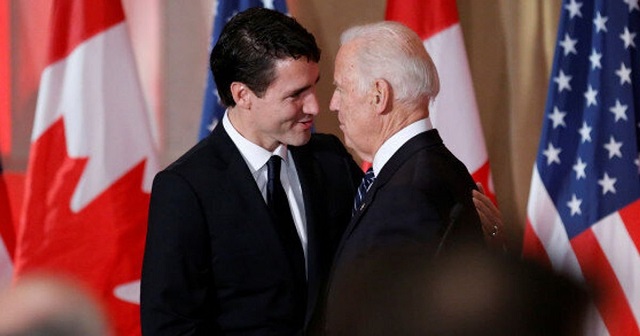Alberta
Drayton Valley residents returning home as evacuation order is lifted
Update 13: Alberta wildfire situation (May 16, 5:30 p.m.)
The evacuation order has been lifted for the Town of Drayton Valley and parts of Brazeau County. Re-entry began at 2 p.m.
Those evacuated due to wildfires should register at local reception centres or at emergencyregistration.alberta.
Current situation
- Alberta has declared a provincial state of emergency. Visit alberta.ca/emergency for information or call 310-4455, now available 24-7.
- The fire danger is extreme in northern Alberta with temperatures expected to increase again toward the end of this week. A moderate to high fire rating remains for the Rockies.
- Current wildfire information is available on the Alberta Wildfire Status Dashboard.
- A fire ban and an off-highway vehicle restriction are in place across the Forest Protection Area.
- Parts of Alberta are experiencing moderate to high-risk smoky conditions.
- Learn more about the potential affects of wildfire smoke on your health.
- Wildfire smoke can travel long distances.
- Visit firesmoke.ca to see where the smoke affecting your area is coming from.
- Evacuation orders: 23
- Alberta Emergency Alerts: 17 (12 critical alerts, five advisories)
- Number of evacuees: 19,576
- Alberta currently has more than 2,500 wildland firefighters, including personnel from partner agencies across Canada and the United States as well as the Canadian Armed Forces, 165 helicopters, 31 fixed-wing aircraft, and heavy equipment responding to wildfires in the province.
- An additional 61 personnel are arriving today from Ontario, with 21 expected to arrive from New Brunswick tomorrow.
New information
- A mandatory evacuation order was issued for the town of Swan Hills at 1:15 p.m.
- The evacuation order has been lifted for the town of Drayton Valley and parts of Brazeau County.
- Re-entry operations for the town of Drayton Valley began at 2 p.m. today.
- Local municipalities, First Nations and Metis Settlements may require financial assistance to compensate volunteer firefighters who may not be able to leave their regular jobs in order to join or continue firefighting efforts. Alberta’s government is providing additional support for local firefighting costs to help strengthen the province’s response capacity, improve public safety and assist communities during an unprecedented wildfire season.
Support for evacuees
- Since the announcement of one-time emergency financial assistance for evacuees, more than 10,400 applications have been processed.
- More than $15.8 million in e-transfers has been sent to evacuees.
- More than $3.3 million in debit cards has been distributed.
- Debit cards are available for evacuees unable to receive an e-transfer at 16 Alberta Supports Centre locations with extended hours and at Edmonton and Calgary evacuation centres.
Donations
- Albertans who wish to help can make cash donations through the Canadian Red Cross or within their regions to a recognized charitable organization of their choice.
- The Government of Canada and the Government of Alberta will each match every dollar donated to the Canadian Red Cross 2023 Alberta Fires Appeal. This means that every $1 donated will become $3 to support those affected by the wildfires.
- Individuals and companies with goods or services to offer or donate to support the government’s response to the wildfire can email [email protected].
ca.
For more information on the emergency and supports for evacuees, go to alberta.ca/emergency.
Alberta
Alberta government should eliminate corporate welfare to generate benefits for Albertans

From the Fraser Institute
By Spencer Gudewill and Tegan Hill
Last November, Premier Danielle Smith announced that her government will give up to $1.8 billion in subsidies to Dow Chemicals, which plans to expand a petrochemical project northeast of Edmonton. In other words, $1.8 billion in corporate welfare.
And this is just one example of corporate welfare paid for by Albertans.
According to a recent study published by the Fraser Institute, from 2007 to 2021, the latest year of available data, the Alberta government spent $31.0 billion (inflation-adjusted) on subsidies (a.k.a. corporate welfare) to select firms and businesses, purportedly to help Albertans. And this number excludes other forms of government handouts such as loan guarantees, direct investment and regulatory or tax privileges for particular firms and industries. So the total cost of corporate welfare in Alberta is likely much higher.
Why should Albertans care?
First off, there’s little evidence that corporate welfare generates widespread economic growth or jobs. In fact, evidence suggests the contrary—that subsidies result in a net loss to the economy by shifting resources to less productive sectors or locations (what economists call the “substitution effect”) and/or by keeping businesses alive that are otherwise economically unviable (i.e. “zombie companies”). This misallocation of resources leads to a less efficient, less productive and less prosperous Alberta.
And there are other costs to corporate welfare.
For example, between 2007 and 2019 (the latest year of pre-COVID data), every year on average the Alberta government spent 35 cents (out of every dollar of business income tax revenue it collected) on corporate welfare. Given that workers bear the burden of more than half of any business income tax indirectly through lower wages, if the government reduced business income taxes rather than spend money on corporate welfare, workers could benefit.
Moreover, Premier Smith failed in last month’s provincial budget to provide promised personal income tax relief and create a lower tax bracket for incomes below $60,000 to provide $760 in annual savings for Albertans (on average). But in 2019, after adjusting for inflation, the Alberta government spent $2.4 billion on corporate welfare—equivalent to $1,034 per tax filer. Clearly, instead of subsidizing select businesses, the Smith government could have kept its promise to lower personal income taxes.
Finally, there’s the Heritage Fund, which the Alberta government created almost 50 years ago to save a share of the province’s resource wealth for the future.
In her 2024 budget, Premier Smith earmarked $2.0 billion for the Heritage Fund this fiscal year—almost the exact amount spent on corporate welfare each year (on average) between 2007 and 2019. Put another way, the Alberta government could save twice as much in the Heritage Fund in 2024/25 if it ended corporate welfare, which would help Premier Smith keep her promise to build up the Heritage Fund to between $250 billion and $400 billion by 2050.
By eliminating corporate welfare, the Smith government can create fiscal room to reduce personal and business income taxes, or save more in the Heritage Fund. Any of these options will benefit Albertans far more than wasteful billion-dollar subsidies to favoured firms.
Authors:
Alberta
Official statement from Premier Danielle Smith and Energy Minister Brian Jean on the start-up of the Trans Mountain Pipeline

-

 Education22 hours ago
Education22 hours agoSupport a young reader through the Tim Hortons Smile Cookie campaign
-

 Brownstone Institute1 hour ago
Brownstone Institute1 hour agoThe Teams Are Set for World War III
-

 Addictions16 mins ago
Addictions16 mins agoWhy can’t we just say no?
-

 Automotive2 days ago
Automotive2 days agoVehicle monitoring software could soon use ‘kill switch’ under the guise of ‘safety’
-

 Addictions2 days ago
Addictions2 days agoCity of Toronto asks Trudeau gov’t to decriminalize hard drugs despite policy’s failure in BC
-

 Opinion1 day ago
Opinion1 day agoClimate Murder? Media Picks Up Novel Legal Theory Suggesting Big Oil Is Homicidal
-

 Business2 days ago
Business2 days agoWhen politicians gamble, taxpayers lose
-

 Bruce Dowbiggin2 days ago
Bruce Dowbiggin2 days agoIt Gets Late Early These Days: Time To Bounce Biden & Trudeau?






